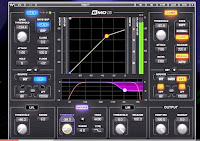Dust off those surround sound chops because it's coming back in a big way.
I'm frequently asked by students and people new to the business where they should put their efforts. While music is the most glamorous choice, it's also the one with the greatest heartache, since you can have a great career if you have a hit, but might be struggling for a long time otherwise.
Until now I would tell everyone that if they wanted to make money and have a more or less secure job, post-production was the way to go, since the pockets were generally a lot deeper and there was a lot more work once you were established.
That's no long true, as the home studio craze has now hit post in a big way, and normal "jobs" are harder to find as many editors and mixers now work at home as an independent contractor with a far smaller budget than ever before.
But I've seen the writing on the wall, and it's called
Virtual Reality.
As of this Christmas you're going to see the prices come down on devices like the
Oculus Rift, HTC Vive, Sony Playstation VR, Samsung's Gear VR and
Microsoft HoloLens as they become the hot gift of the year and the beginning of next as new versions are introduced.
In 2016 the floodgates for headphone surround will open, because as virtual reality takes hold, the need for surround sound audio will be quite apparent to further enhance the experience.
Everything from games to movies to music will be needed to be mixed in headphone surround, and the best thing is that you won't need a big expensive surround monitor setup to do it - only a really good set of headphones.
Headphone surround isn't limited to 5.1 either, as 7.1 is the norm, with
DTS's Headphone X adding height channels at an enhanced 11.1.
So it's time meet the newest and fastest rising sector of the audio business. You can get started by brushing up on the
VR systems available, as well as the various surround headphone technologies by
Dolby,
DTS and
Sennheiser, among others.
Listen to some music examples at
Bob Margouleff's Headphone Surround site, and prepare for a new journey into audio.







